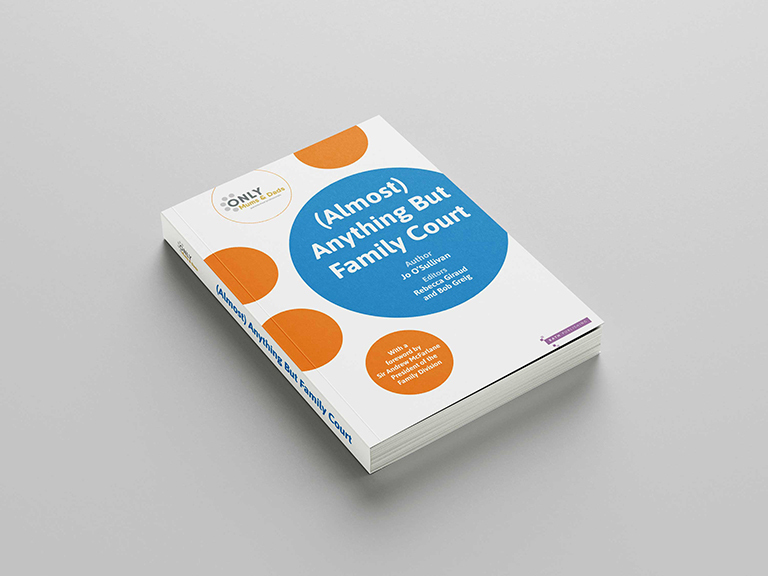The Form E is a court document otherwise known as a Financial Statement. It is used within financial remedy court proceedings to enable both parties to provide their financial disclosure. The document, which runs even as a blank form to some 27 pages, requests comprehensive information and documentation to confirm your financial position.
A Form E must be completed as accurately as possible with up to date information. There are serious penalties for inaccuracies or excluding assets if the form is used in court proceedings.
However, the Form E is often also used when separated spouses are trying to resolve financial matters outside of the court process. It is a standard format for providing disclosure which lawyers are familiar with and, because of its comprehensive nature, should ensure that all key information is provided. As both spouses have to complete their own document, it should also ensure that each spouse provides the same information and documentation if applicable to them. As a result, each spouse should be aware of the true financial position of the other. It is like putting both pieces of a two-piece jigsaw together to get a full picture.
What’s in the form?
At the back of the document, there is a list of the documents to be attached (if applicable), including mortgage information, statements for bank accounts, investments and life insurance policies, business accounts, pension valuations and income details through pay slips and/or tax returns.
A Form E must be completed as accurately as possible with up to date information. There are serious penalties for inaccuracies or excluding assets if the form is used in court proceedings.
Further, if it transpires that the Form E was not accurately completed and a settlement is reached without court proceedings having commenced, it is then possible to get that agreement set aside.
The Form E contains 5 sections. The opening section of the form gathers general information about you, your children and your living arrangements so is usually fairly straight forward to complete.
Section 2 is the most time consuming as it asks for financial information concerning property and personal assets. It is divided into 10 parts which are discussed in more detail below.
Part 1 requests:
The valuation of the family home and any other land and buildings you own along with details of the outstanding balance of any mortgage and estimated costs of sale. You do not have to provide a valuation of any of the properties or land from an expert when you complete your Form E but you should provide your best estimate of the current market value;
Details of any bank accounts, savings and investments which are in your sole name or in joint names (whether with your spouse or someone else) with details of all bank accounts and investments. For each, you must confirm the value of your interest;
Details of any life insurance policies you have either in your sole name or in joint names;Information about monies owed to you, cash sums and personal belongings worth more than £500.
Part 2 requires:
Details of any liabilities of any kind which you have and are not mentioned elsewhere in the Form E (for example, a mortgage would not be included in Part 2 as it is included in Part 1);
Information about whether any capital gains tax isdue upon the disposal of anyof yourassets
Part 3 requests:
Details of any business interests you have along with copies of your business accounts for the last 2 years;
Confirmation of any directorships you hold.
Part 4 asks for:
Details of any pensions you hold other than the basic state pension. The most critical piece of information in this section is the cash equivalent transfer value of your pension. Additional important information is required to complete this section and the best way to obtain everything is to write to each of your pension providers, with a pension enquiry form (known as Form P) to complete at an early stage as it can take a while for the provider to respond. If your lawyer makes the request on your behalf, you will need to provide your authority to the pension provider releasing information to them. Your lawyer will be able to help you with this.
Part 5 concerns:
Any other assets not captured elsewhere such as share option schemes, trust interests, and assets held on your behalf by a third party. Your lawyer can give you further guidance on whether assets should be included in this part orelsewhere.
Parts 6 to 10 request:
Details of your income from employment, self-employment or partnership, investments, state benefits, or any other income such as pension income. It is important that you provide accurate details of your income and that it is inserted in the appropriate section included in these parts. Your lawyer will be able to give advice on this.
Section 3 requests:
Details about the income needs of you and any children living with you. Essentially this asks what your outgoings are on a weekly, monthly, or annual basis, whichever time frame you prefer to use. I always use monthly. You should complete sections 3.1.1 and 3.1.2 (if applicable) fully so that they are accurate as this could affect any financial settlement or order made. Your lawyer will probably have a precedent schedule which sets out the usual items of expenditure people have to pay and using this will help to ensure that you do not miss any items from your schedules at sections 3.1.1 and 3.1.2 (if applicable).
Information about the capital needs of yourself and your children. You can include items such as the cost of a new house (if you know at this stage what that cost will be), a car or replacement furniture. Your lawyer will be able to give you advice about the items you can include and the amounts you can include as your estimated cost, if indeed it is appropriate to include an amount.
Section 4 asks:
For details about changes in your assets and income;
For information about the standard of living you and your spouse enjoyed whilst you were married;
Whether you made any particular contributions to the family;
For details of any bad behaviour by your spouse;
If there are any other circumstances which are relevant to the distribution of assets, income and liabilities such as your earning capacity and inheritance prospects; and
For financial details about any new cohabitee you have.
The sub-sections in section 4 are an opportunity to provide information which is relevant to the financial agreement or order made. Your lawyer will be able to advise you on what matters may be relevant in your particular circumstances, and to draft the wording in the sub-sections in a way which assists the case you wish to put forward.
Posted on June 4, 2019
















